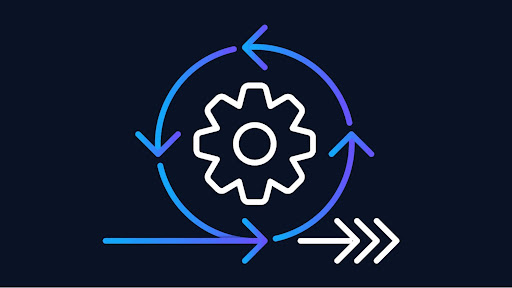Empowering Applications with Intelligence: A Deep Dive into Power BI Embedded Services

Introduction
In the era of digital transformation, businesses are recognizing the critical role of data in driving innovation and enhancing user experiences. Microsoft’s Power BI Embedded Services emerges as a key player in this landscape, providing developers with the tools to seamlessly integrate robust analytics and visualizations into their applications. This comprehensive guide will explore the intricacies of Power BI Embedded, shedding light on its features, benefits, and real-world applications. From enhancing the functionality of applications to delivering actionable insights, Power BI Embedded is revolutionizing the way developers leverage data to create intelligent and engaging solutions.
Understanding Power BI Embedded
Power BI Embedded is an Azure service that allows developers to embed Power BI reports and dashboards directly into custom applications, extending the power of data analytics to end-users. Unlike traditional Power BI deployments, Power BI Embedded provides a scalable and flexible solution for embedding analytics within applications, enabling a seamless and integrated user experience.
Key Components of Power BI Embedded:
Embedding Capabilities: Power BI Embedded offers a range of embedding options, allowing developers to integrate Power BI reports and dashboards into web and mobile applications effortlessly. This capability is essential for delivering data-driven insights directly within the context of user interactions.
REST APIs and SDKs: Developers can leverage Power BI Embedded REST APIs and Software Development Kits (SDKs) to customize and control the embedded analytics experience. This level of flexibility empowers developers to tailor the integration to match the specific requirements of their applications.
Capacity Management: Power BI Embedded operates on a capacity-based model, providing developers with the flexibility to choose the capacity that aligns with the needs of their applications. This ensures optimal performance and responsiveness, even as application usage scales.
Benefits of Power BI Embedded
The adoption of Power BI Embedded brings a host of advantages for developers and organizations seeking to enhance their applications with data-driven insights:
Seamless Integration: Power BI Embedded seamlessly integrates with custom applications, allowing developers to embed interactive reports and dashboards without requiring users to leave the application environment. This creates a unified and cohesive user experience.
Scalability: With its capacity-based model, Power BI Embedded ensures that applications can scale to accommodate varying user loads. Whether an application serves a small user base or experiences rapid growth, Power BI Embedded provides the necessary scalability to handle increasing data volumes and user interactions.
Customization and Branding: Developers have the flexibility to customize the look and feel of embedded reports to align with the overall branding and design of their applications. This level of customization enhances the user experience and ensures a consistent visual identity across the entire application.
Embedding for External Users: Power BI Embedded supports embedding for external users, enabling organizations to share insights and analytics with partners, customers, or other stakeholders. This is particularly valuable for applications that serve a broader ecosystem beyond internal users.
Real-world Applications
Power BI Embedded is making waves across various industries, providing developers with the tools to create intelligent applications that leverage the full potential of data analytics. Some notable applications include:
E-commerce Analytics: In the e-commerce sector, Power BI Embedded enables developers to embed analytics directly into online platforms. This allows businesses to provide real-time insights on sales, customer behavior, and inventory levels, empowering users to make informed decisions within the e-commerce environment.
HealthTech Solutions: In healthcare applications, Power BI Embedded facilitates the integration of analytics for patient data, treatment outcomes, and medical research. Developers can embed dashboards that provide healthcare professionals with actionable insights, enhancing patient care and optimizing clinical processes.
Financial Platforms: FinTech applications leverage Power BI Embedded to embed financial analytics, performance reports, and market insights. This integration enhances the user experience by providing investors, traders, and financial analysts with real-time data within the financial platform.
Conclusion
In conclusion, Power BI Embedded Services is a transformative tool for developers, enabling them to infuse intelligence into their applications seamlessly. Whether it’s delivering interactive reports, facilitating scalability, or customizing the user experience, Power BI Embedded empowers developers to create applications that stand out in a competitive digital landscape. As businesses increasingly recognize the value of data-driven insights, the integration of Power BI Embedded becomes not just a technological choice but a strategic imperative. By embracing Power BI Embedded, developers embark on a journey to redefine the capabilities of their applications, offering users a richer, more insightful, and ultimately more valuable experience.

 Stars-923: Unveiling the Mystical Cosmos
Stars-923: Unveiling the Mystical Cosmos  Buying Guide for Short-Throw 4K Projectors for Gaming
Buying Guide for Short-Throw 4K Projectors for Gaming  5 Best Wireless Apple CarPlay Adapters in 2024
5 Best Wireless Apple CarPlay Adapters in 2024  The Essential Role of Animated Explainer Videos in Tech Documentation
The Essential Role of Animated Explainer Videos in Tech Documentation  How Do You Apply Agile Testing Principles And Practices Across Different Domains And Contexts?
How Do You Apply Agile Testing Principles And Practices Across Different Domains And Contexts?  What Are The Benefits And Challenges Of Using Mock Objects In TDD?
What Are The Benefits And Challenges Of Using Mock Objects In TDD?